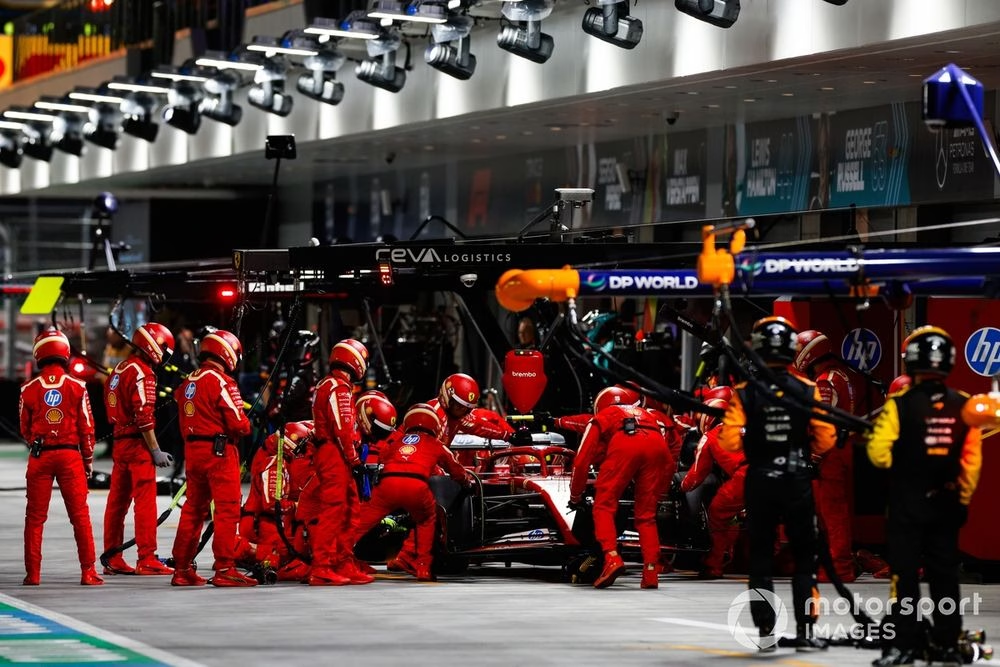A quirk in Formula 1’s regulations meant Carlos Sainz was not penalised for crossing the pit-entry line during the Las Vegas Grand Prix.
Ferrari driver Sainz was leading Lewis Hamilton’s Mercedes into the pits for his second stop when a late call to suggest his crew wasn’t ready resulted in the Spaniard diverting to the outside of the pitwall and continuing for another tour of the Nevada venue.
Despite the expectation that the race stewards would investigate the move, the incident was never checked and Sainz ultimately went on to finish third following a tumultuous battle with team-mate Charles Leclerc.
The FIA’s International Sporting Code states: “Except in cases of force majeure, or otherwise established by the race director […] any part of a tyre of a car entering the pitlane must not, in any direction, extend beyond the line painted on the track for the purpose of separating cars entering the pitlane from those on the track.”
This regulation is often coupled with a race director’s instruction as part of the briefing notes for drivers and teams ahead of a given race weekend – usually tailored track-by-track due to differing pitlane constructions.
In Azerbaijan, for example, the high-speed entry means that drivers must remain committed to pit once past the broken pit-entry line extending down the long Baku straight.
But no such race director’s instruction was given for Las Vegas, and in this specific case, although Sainz clearly crossed the white line separating the pit entry from the track, he did not infringe the International Sporting Code because he never actually returned to the pits to change tyres.
Carlos Sainz, Ferrari SF-24, makes a pit stop
Photo by: Glenn Dunbar / Motorsport Images
Consequently, Sainz never technically entered the pitlane, which is marked by the 80km/h speed-limit line.
If the Scuderia driver had crossed the white line but ducked back over and into the pits, then a penalty would have been applied – as was the case for Alex Albon and Hamilton at this year’s Austrian Grand Prix.
But, in Sainz’s case, race direction imposed a track-limit strike given he essentially cut the final corner, cancelling that lap time and the following one, but not triggering a penalty.
Reflecting on his race afterwards, Sainz said: “We just simply didn’t execute in general. We just didn’t execute a very good race.
“I think we stayed out one lap too late on mediums, two laps too late on hards….
Click Here to Read the Full Original Article at Autosport.com – Formula 1 – Stories…

